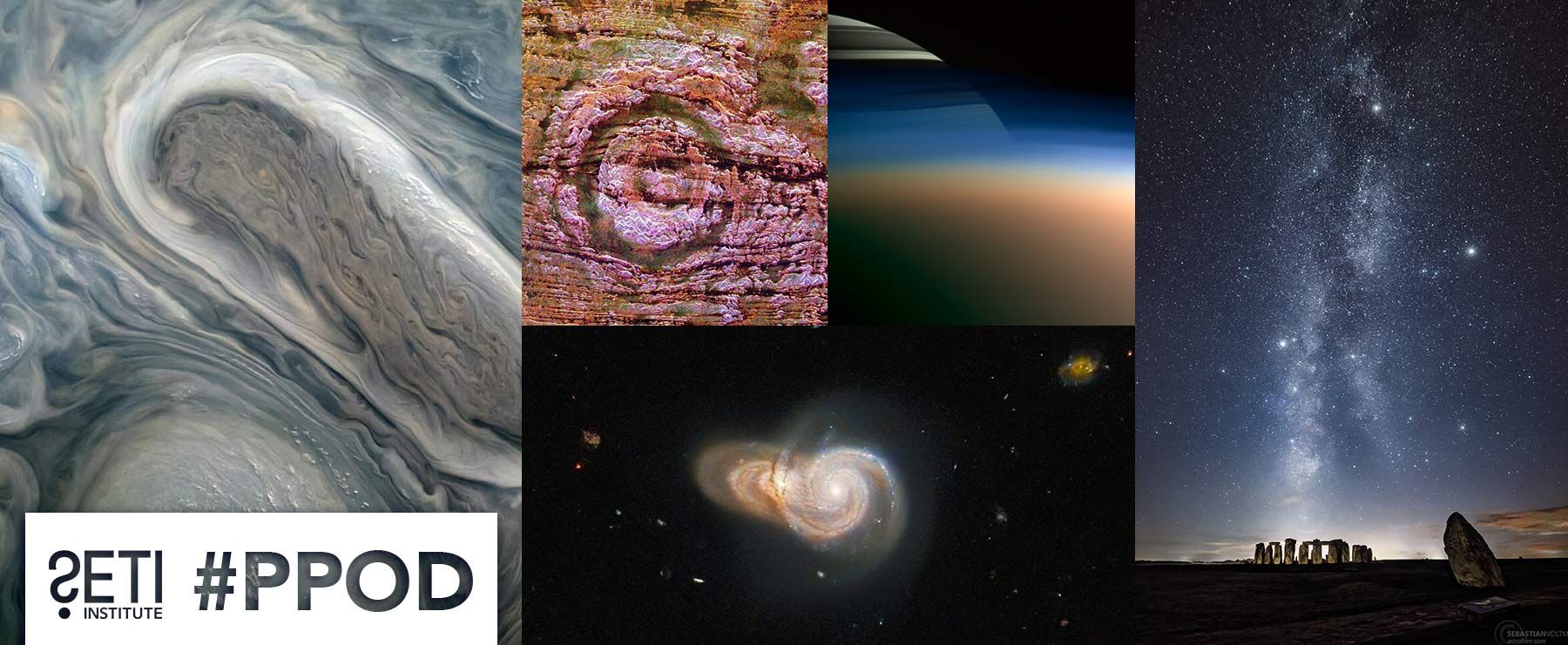
Planetary Picture of the Day
Week of September 19, 2022
A close-up view of two astonishing atmospheres, galaxies, and amazing sights here on Earth.
Monday, September 19, 2022
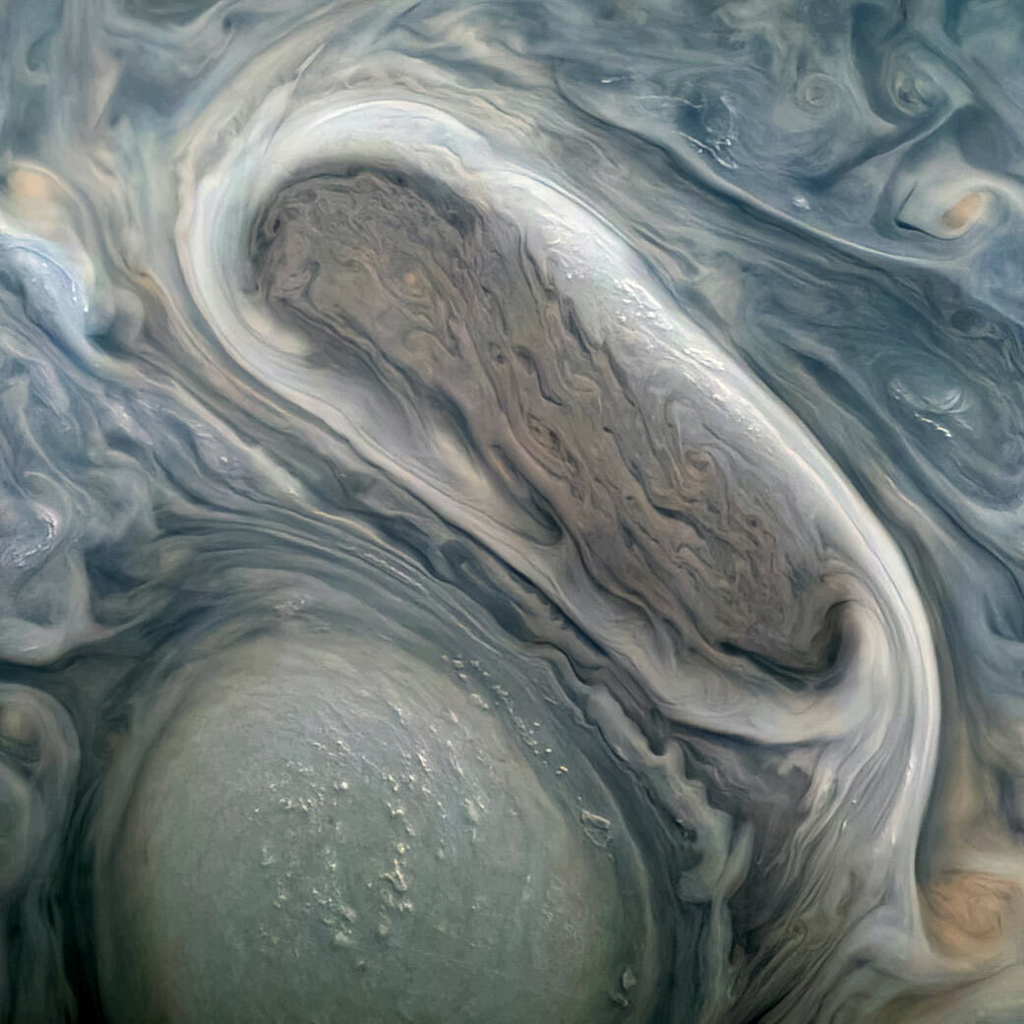
Credit: NASA / JPL-Caltech / SwRI / MSSS / Kevin M. Gill
Giant Storms and High Clouds
This image shows two of Jupiter's large rotating storms, captured by Juno’s visible-light imager, JunoCam, on Juno’s 38th perijove pass, on Nov. 29, 2021. This image was acquired at 50 degrees 5 minutes north latitude, at an altitude of 3,815 miles (6,140 kilometers). Atmospheric details as small as 2.5 miles (4 kilometers) can be discerned in the image. Bright “pop-up” clouds are visible above the lower storm, casting shadows on the cloud bank below. Although the pop-up clouds appear small in comparison to the large storm below, such clouds are typically 31 miles (50 kilometers) across.
Tuesday, September 20, 2022
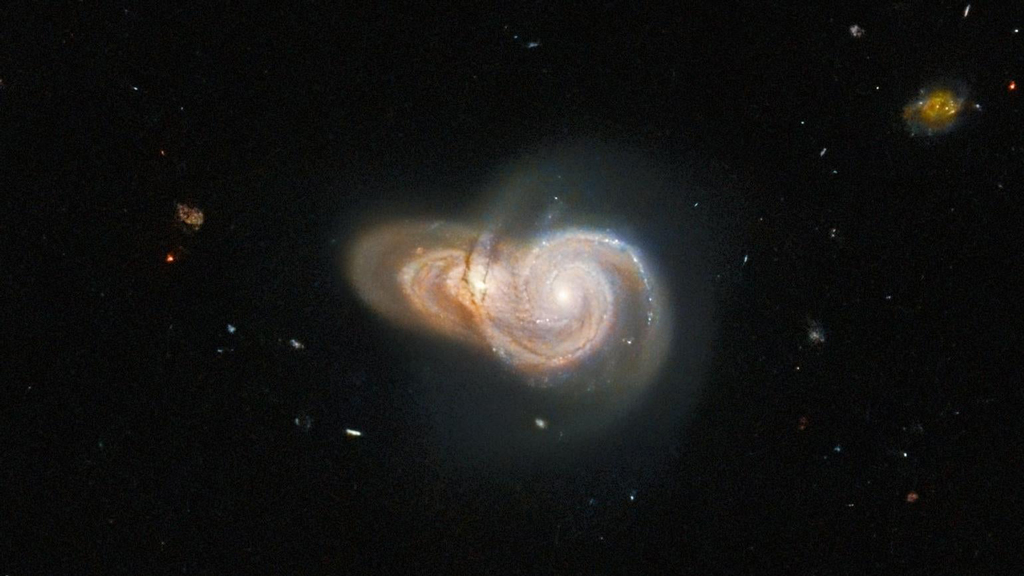
Credit: ESA/Hubble & NASA, W. Keel
A Galactic Overlap
A new shot from the Hubble Space Telescope reminds us that JWST isn’t the only show in town. Two spiral galaxies, more than a billion light-years from Earth, appear to be colliding.
To be clear: They aren’t actually anywhere near each other, but from Hubble’s perspective, one is eclipsing the other. The galaxies are named SDSS J115331 and LEDA 207346.
Wednesday, September 21, 2022
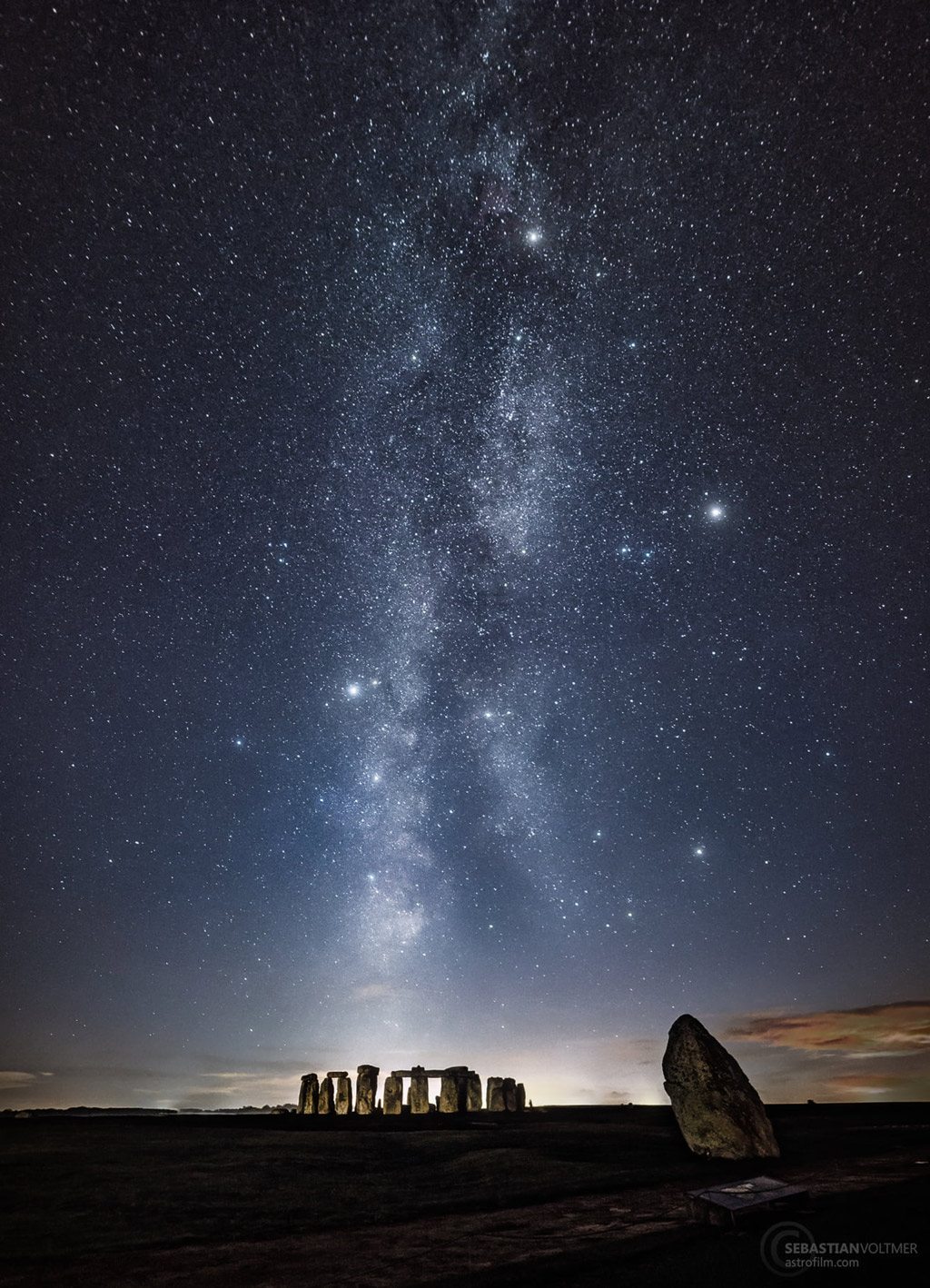
Credit: Sebastian Voltmer
Milky Way over Stonehenge
"In the early evening I walked to the monumental stones of Stonehenge. As the sun slowly disappeared behind the stones, I set up my photo equipment. The weather was changeable. But just in time after the blue hour, the sky cleared up." Taken on 1 December 2018.
Thursday, September 22, 2022
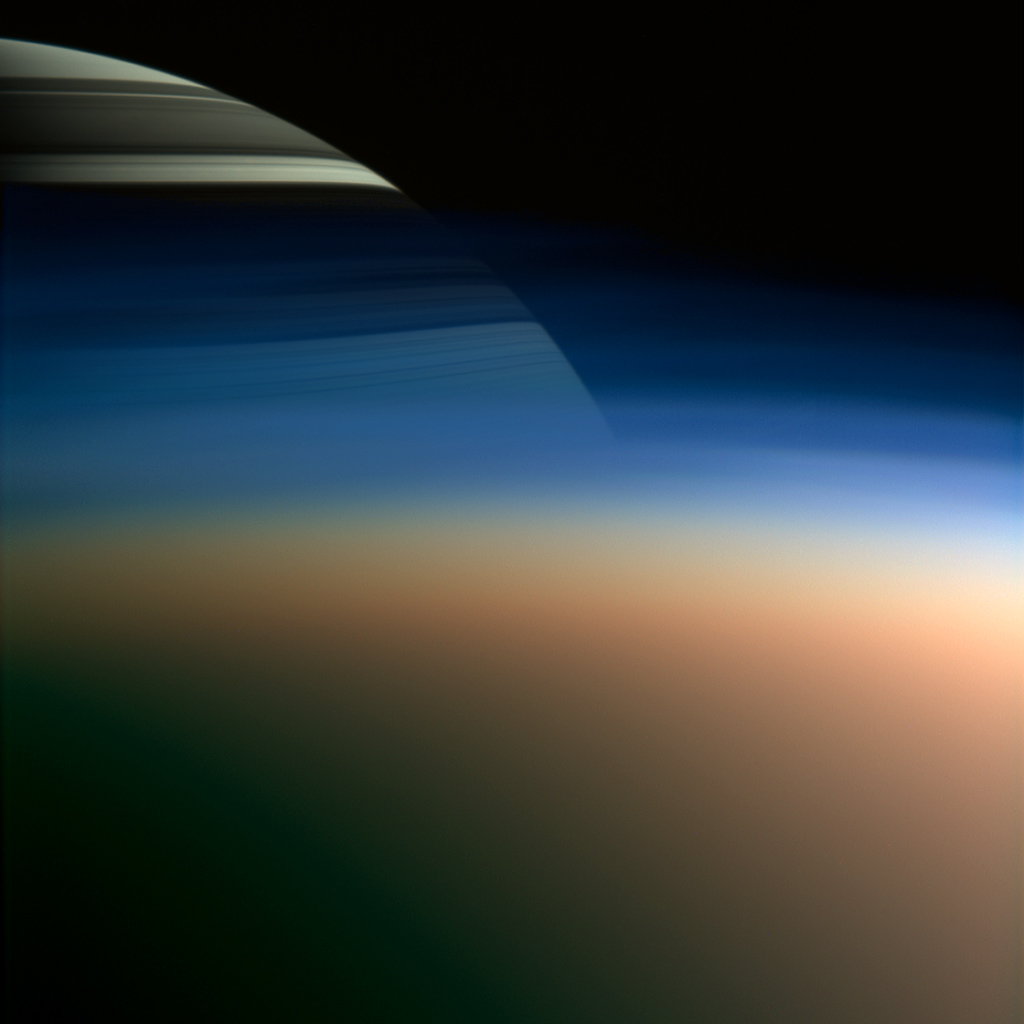
Credit: NASA / JPL-Caltech / SSI / Cassini Imaging Team / Ian Regan and Val Klavans
Saturn Through Titan's Atmosphere
NASA's Cassini spacecraft views Saturn through the atmosphere of the planet's largest moon, Titan. The image was captured on 31 March 2005 while Cassini was 7,500 kilometers above Titan, and 1.2 million kilometers from Saturn.
Friday, September 23, 2022
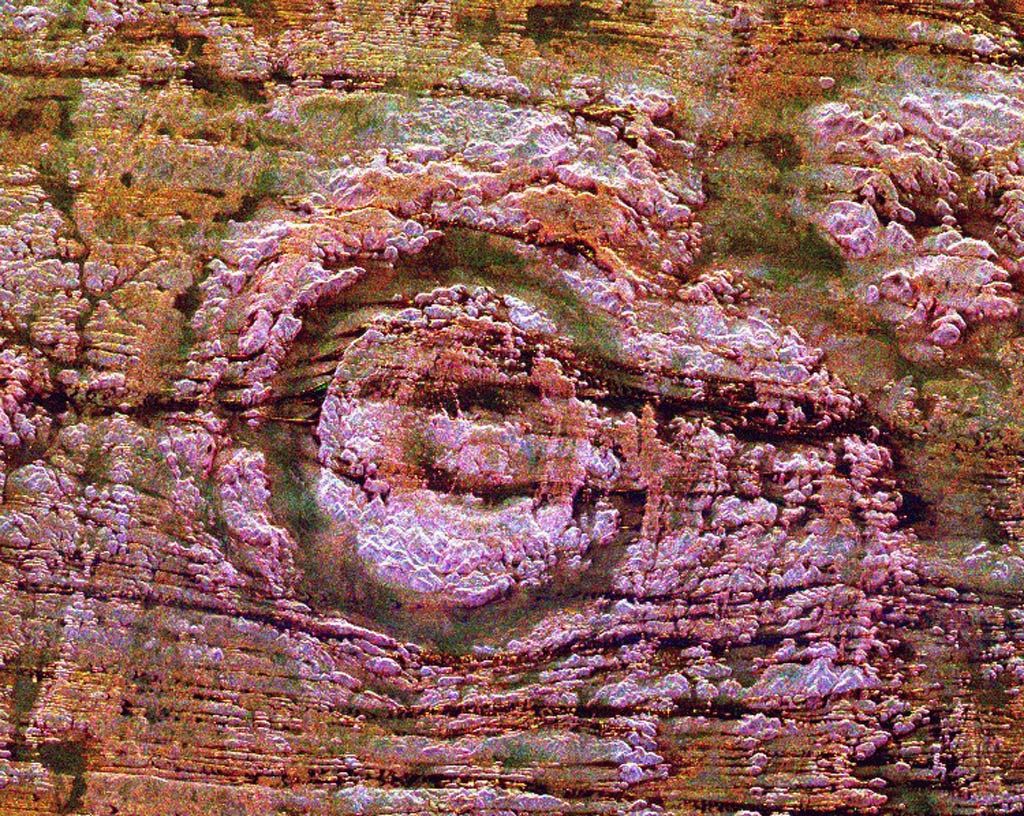
Credit: NASA
Space Radar of Image Aorounga Impact Crater, Chad
The Aorounga crater in the Sahara Desert of northern Chad is thought to have formed from one of a chain of meteor impacts around 345 million years ago. The crater is 17 kilometers (10.5 miles) in diameter, making it one of the largest exposed craters on Earth. This image was acquired from shuttle Endeavour in April 1994.





